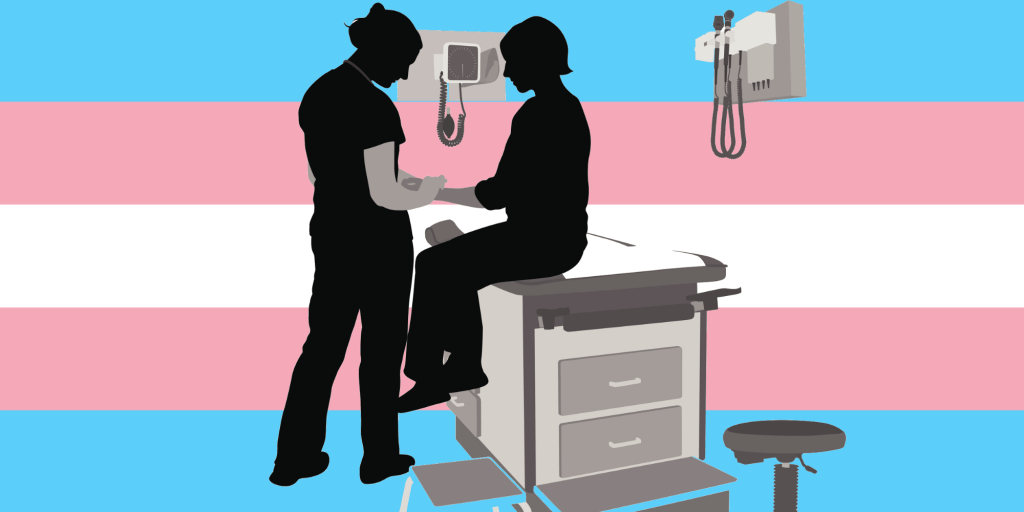‘Sup Bro?
We can’t say it enough: we’re so so sooooooo proud of you for coming out of your shell (pun intended) and we’re so so sooooooo excited to help you feel more like your studly self. That being said, transition looks different for everyone, and we want to be very intentional with how we frame it so it doesn’t exclusively reflect our personal transitions.
Tackling the process of transitioning from one gender identity to another seems very daunting and often scary to both those going through it and their allies, but it does not have to be! While the process is long, and requires a lot of self-care and self- love, it is totally worth it to evolve out of your unconventional chrysalis into the man (or masc-person) you were meant to be.
Before we dive too deep into talking about transitions, let’s be real, dude: being trans is hard. Not because we’re doing anything wrong or unnatural, of course, but more because people are nosy and think they know everything. Let’s box it up in a neat, little package, and say that living in our transphobic society can lead to series, depression, anxiety, self-loathing, PTSD, and physical violence (just to name a few). It sucks and people are jerks, which is why you have to take care of yourself and surround yourself with people who love you.








Aggressively gendered stereotypes and warning labels aside, you are beautiful and wonderful, and if we could jump through your computer screen and give you a (consensual) hug, we totally would. Instead, we want to encourage you to take a deep breath and let it out. Take this breath as a chance to let out whatever anxieties you’ve brought to this website and to the transition process in general. If you’re one of those lucky folx who gets gender dysphoria, don’t worry—we’ve got you covered.
We’re going to discuss a few of the areas transmen and transmasculine folx want to learn about first, but know that this list isn’t comprehensive. If there’s something you want to learn about, Google it (or use Bing if you can’t figure out how to change your default browser).
Remember that you are perfect the way you are, and that all of these resources are just garnishes for your already perfect self. We hope you’ll approach them from a place of self-love and self-care. Be patient with yourself, and don’t forget that YOU ARE QUEER ENOUGH.
Clothes
There are lots of ways to acquire some sick, new threads that affirm your gender identity. For cost effectiveness and sustainability, we recommend shopping at thrift stores or attending clothing swaps. As your style changes, you’ll be thankful that you didn’t spend hella moneys on something brand new.
If you don’t feel like going to an actual brick and mortar shop, check out the websites below:
Chest Binding
For transmasculine youth who have pubescent breast development, it is common to want to flatten the bust to have a more masculine chest shape.
- Using chest binders bought from reputable sites (GC2B, Underworks, and others) is safe when worn for less than 8 hours at a time to allow proper airflow.
- If chest binders are not affordable, layering 2 sports bras is also effective and safe.
- Using ace bandages, duct tape, or other similar methods IS NOT SAFE. Do NOT bind your chest or anyone else’s in any of these ways, as it significantly limits airflow and can cause lasting rib damage.

Name Change
While laws vary from state to state, it is possible for children and youth to have their name legally changed with parental/guardian consent. Please check your state’s guidelines for details. Also check the Legal tabs for further information about changing legal documents.
Surgery & HRT
Hormone Replacement Therapy (HRT)
When people think of HRT, often their association is with testosterone exclusively which can be worrying to many parents (testosterone is craaaaaazy and many of its effects are not reversible). However, fret not. If you or someone you know has an interest in medically transitioning, there is a step before testosterone in the form of hormone blockers. These blockers do nothing but limit the sex hormones the body is already producing, thereby preventing or at least slowing the development of secondary sex characteristics in people experiencing puberty. This is often the preferred starting point, so that no lasting changes occur if the person receiving the blockers decides to stop them for any reason.
- Testosterone is typically prescribed to teenagers and adolescents, after several sessions with a gender identity therapist to discuss the changes it can bring.
Click on the pictures below for more information about blockers and testosterone:
Surgery
It is fairly uncommon for trans youth of any identity to undergo surgical procedures before the age of 16. Oftentimes surgeons who perform gender-affirming procedures require the person to be on hormone therapy treatment for a prolonged period of time prior to the operation they desire, as well as recommendations from a therapist and psychiatrist who have assessed the client.
- Top Surgery (Keyhole vs Double Mastectomy): “top surgery” refers to the reduction or complete removal of breast tissue in order to flatten the chest. Two methods are most common, and the method is determined based on breast size, medical history, and other factors. Keyhole surgery leaves little to no scarring, and can only be performed on people who already have very little breast tissue they want removed. A double mastectomy refers to a procedure in which the breasts are removed and the chest remodeled to appear more masculine, and leaves significant horizontal scars just under the pectorals.
- Hysterectomy: another procedure that appeals to many transmasculine adolescents is either a full or partial hysterectomy or oophorectomy, which involves removing all or just a few of the following: the ovaries, fallopian tubes, cervix, and uterus. Transmasculine people may seek out this type of surgery if they have particularly brutal menstrual cycles and/or no desire to have biological children, as it removes the estrogen producing organs that cause menstruation and pregnancy. However, if all sex organs and their associated hormones are removed, this means that person will need to take lifelong hormone supplements.
Click on the videos below for more information about surgeries:
Hair
At this point, transmen and transmasculine folx can pretty much rock any hair style they want. If you don’t know exactly what will feel most comfortable for you, try looking at hairstyles on Pinterest or Google, find one you like, and ask whoever cuts your hair to put it on your head…or buzz everything? You’ll figure it out.
Transmasculine Without the Transition
There are a number of reasons that people do not want to transition. If you have no interest in changing the way you present, it is nobody else’s job to persuade you.
Instead of making suggestions, they should ask what would be useful. Some helpful things may be:
- Asking what pronouns you would be most comfortable being referred to with
- Offering gift cards for clothes or other traditionally gendered products, such that you can choose for yourself and avoid the discomfort/awkwardness/potential outing by exchanging the gift
- Allowing you to choose a group to be in if it is sex-segregated; even better is allowing you to sit out and do something different if they do not want to participate.
- Allowing you to introduce yourself rather than using terms like “my daughter/niece/granddaughter/sister/etc.” If you don’t feel comfortable introducing yourself, your loved-one should ask you how you want to be introduced (in an ideal world, of course).
Above all else, you should be open to your own feelings and thoughts about your identity changing over time. Almost nobody knows immediately who they are and who they want to be, and the way you present may change and shift as you learn more about your comfort with yourself and how others perceive you. The best and most healthy thing to do is explore your identity at your own pace and seek support when you need it. Don’t forget, this is about self-love and self-care, not about being the most macho, manly dude in the room.




